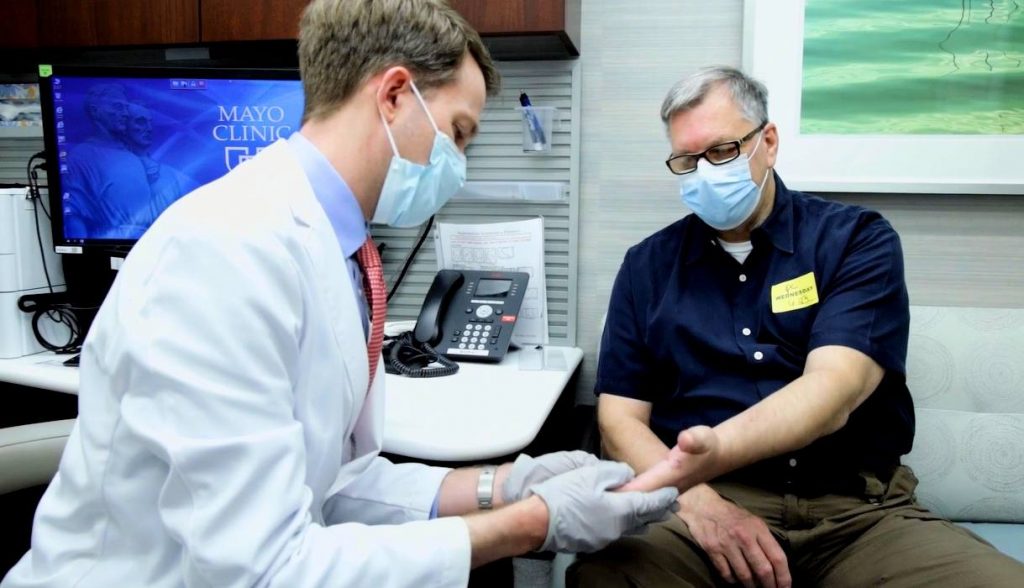
DEAR MAYO CLINIC: About six months ago, a large, white dent appeared on my left buttock. I went to a dermatologist who performed a biopsy. I was diagnosed with morphea and prescribed methotrexate. The doctor said the condition is not systemic, but that the drug could prevent future skin lesions and possibly cure the morphea. Can you share more about the condition, and the risks and benefits of the treatment?
ANSWER: Morphea, which is a rare skin disorder, causes painless hardening and discoloration of the skin. In many cases, morphea affects only a few areas on the body. The condition usually goes away on its own within several years. In the meantime, treatment often can keep symptoms in check.
When morphea first develops, most people have just one or two lesions, usually on the abdomen, chest or back. The lesions tend to be round areas of whitened and hardened skin, sometimes surrounded by a faint lilac-colored border. Over time, the lesions fade away, but they may leave behind patches of discolored or darkened skin.
Depending on where it occurs, morphea can affect mobility, particularly if it forms on the arms or legs. In some cases, morphea can cause affected skin to atrophy, leading to depressions in the skin.
The specific cause of morphea isn't known. It is thought to be a type of autoimmune disorder, in which the body's immune system mistakenly attacks healthy tissue, causing inflammation and leading to symptoms. Possible triggers for morphea can include radiation, skin trauma or a recent infection. Morphea itself is not an infectious disease, and it is not contagious.
Morphea affects only the skin. It doesn't involve other organs. When a health care provider suspects morphea, a blood test is performed to rule out scleroderma, a related and more serious autoimmune disorder. Scleroderma causes hardening of the skin and the body's connective tissues, and it can damage internal organs. A biopsy may be performed to rule out other concerns.
Although morphea eventually goes away on its own over time, treatment usually is recommended to decrease symptoms. Treatment works best when the condition is in its early stages, so the sooner a lesion is treated, the better.
The first step in treatment for morphea in a case like yours, where the condition is confined to one area, usually involves using a topical cream on affected skin. The cream may include medications such as corticosteroids, calcineurin inhibitors or calcipotriene to reduce the inflammation that's causing symptoms.
When morphea is extensive, if it does not respond to topical treatment, or if it involves deeper tissue, then systemic treatment, such as methotrexate, may be the next step.
Methotrexate is a drug that suppresses the immune system. It often is prescribed in pill form for morphea, and it can reduce symptoms effectively. In dermatology, the medication typically is used in low doses. Because of the smaller dose, more severe side effects, such as extensive hair loss, which can be associated with methotrexate in other situations, are not usually a problem.
Other treatment options for morphea beyond methotrexate also are available. For example, phototherapy, which uses ultraviolet light, can improve the appearance of skin affected by morphea. A class of medications known as tetracyclines also can help. If you are not comfortable with methotrexate or are interested in an alternative to treat morphea, talk to your health care provider about the treatment choices that may fit your situation. — Dr. Jason Sluzevich, Dermatology, Mayo Clinic, Jacksonville, Florida







